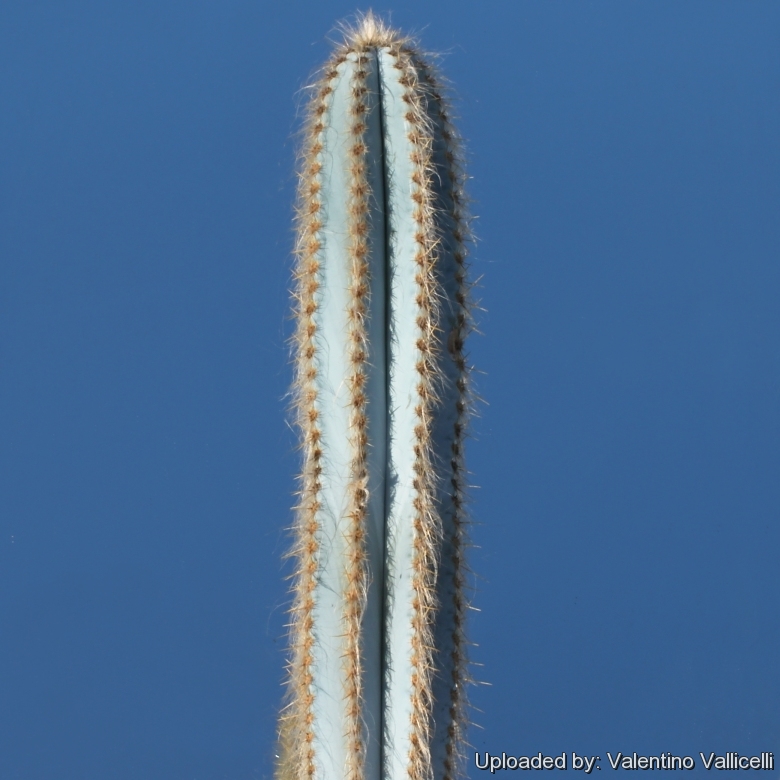
Pilosocereus pachycladus Photo by: Valentino Vallicelli
Origin and Habitat: Brazil (states of Piaui, Ceara, Rio Grande do Norte, Paraiba, Pernambuco, Alagoas, Sergipe and Bahia)
Synonyms:
See all synonyms of Pilosocereus pachycladus
Common Names include:
PORTUGUESE (Português): Facheiro, Mandacarú De Facho, Facheiro Azul
SPANISH (Español): Cardón
Description: It is one of the most spectacular columnar tree-like cereus 1 to 10 (or more) m tall. It ramify at the base or develops a distinct trunk with dozens of erected glaucous (bluish-silver) branches. Its elegant habit (shape) makes it look like a miniature blue Saguaro. This is one of the bluest columnar cacti.
Stem: Turquoise/ sky blue or light blue-green. Branches 5,5-11 cm in diameter.
Ribs: 5-19 about, straight, with traverse folds visible only at the stem apexes, 15-35 mm wide and with12-24 mm deep furrows,
Pseudocephalium: As Pilosocereus cacti age, they produce what is called a 'pseudocephalium', but in Pilosocereus pachycladusSN|16443]]SN|16443]] the fertile portion is often slightly differentiated from normal vegetative parts. The floriferous areole are usually located on one or more ribs near the apical part of the branches and produce thick, soft tufts of orange/white hair (sort-of like that seen in 'old man cacti' Cephalocereus senilisSN|6893]]SN|6893]]). This area of the cactus is where the flowers pop out.
Areoles: 3-10 mm in diameter, 2-12 mm apart with white to grey felt and long white bristles. The areoles that bear flowers very hairy.
Spines: Translucent with yellow hue turning grey as they get old.
Central spines: 1 to 12, straight, directed upwards 1-30 mm long.
Radial spines: 8 to 18 addpressed against the the ribs, 5-15 mm long.
Flowers: More or less funnel-shaped whitish with greenish or reddish outer segments but quite variable in size, 4-7 cm long, 22-45 mm in diameter. The flower-buds are obtuse or acute dark-magenta.
Blooming season (Europe) The flowers open at night in summer and continue the day after; (in its habitat it flowers in October and fruits in January) Flowers are seen only in large, mature specimen at least 1 m tall.
Fruit: Reddish purple, flattened globular, with dry flowers remnants; the pulp is magenta or red and the fruit opens at maturity by lateral splits.
Seeds: Shiny black.
Chromosome number: 2n = 22/44
Subspecies, varieties, forms and cultivars of plants belonging to the Pilosocereus pachycladus group
 Pilosocereus pachycladus F.Ritter: subsp. pachycladus has 5-12 high and broad ribs, long central spines that can be distinguished from radial spines. The areoles that bear flowers are very hairy.
Pilosocereus pachycladus F.Ritter: subsp. pachycladus has 5-12 high and broad ribs, long central spines that can be distinguished from radial spines. The areoles that bear flowers are very hairy.- Pilosocereus pachycladus subs. pernambucoensis (F.Ritter) Zappi: has 13-19 lower thinner ribs, the radial & central spines are about the same length and not easily distinguishable from each other. The areoles that bear flowers are not very hairy.
Bibliography: Major references and further lectures
1) James Cullen, Sabina G. Knees, H. Suzanne Cubey “The European Garden Flora Flowering Plants: A Manual for the Identification of Plants Cultivated in Europe, Both Out-of-Doors and Under Glass” Cambridge University Press, 11/Aug./2011
2) David Hunt, Nigel Taylor “The New Cactus Lexicon” DH Books, 2006
3) Edward F. Anderson “The Cactus Family” Timber Press, 2001
4) N. L. Britton and J. N. Rose “The 'Cactaceae', Descriptions and Illustrations of Plants of the 'Cactus' Family” volume 2 Carnegie Institution, 1920
5) Juliana P. Castro, Luiz G.R. Souza, Lânia F. Alves, Ana E.B. Silva, Marcelo Guerra & Leonardo P. Felix. 1073 Marhold (ed.) “IAPT/IOPB chromosome data 15” TAXON 62 (5) • October 2013: 1073–1083
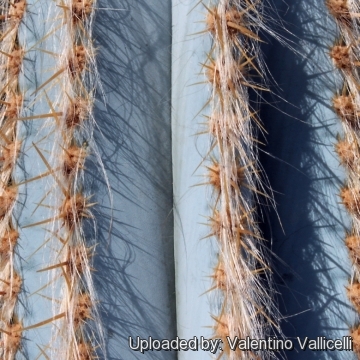 Pilosocereus pachycladus Photo by: Valentino Vallicelli
Pilosocereus pachycladus Photo by: Valentino Vallicelli Pilosocereus pachycladus Photo by: Valentino Vallicelli
Pilosocereus pachycladus Photo by: Valentino Vallicelli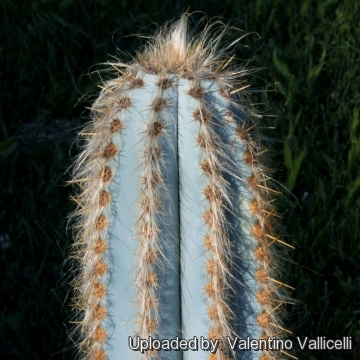 Pilosocereus pachycladus Photo by: Valentino Vallicelli
Pilosocereus pachycladus Photo by: Valentino Vallicelli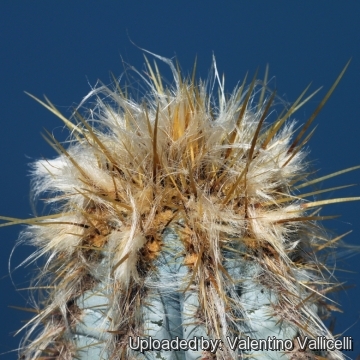 Pilosocereus pachycladus Photo by: Valentino Vallicelli
Pilosocereus pachycladus Photo by: Valentino Vallicelli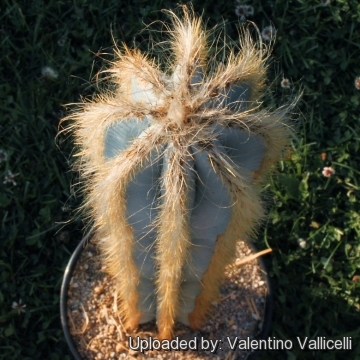 Pilosocereus pachycladus Photo by: Valentino Vallicelli
Pilosocereus pachycladus Photo by: Valentino Vallicelli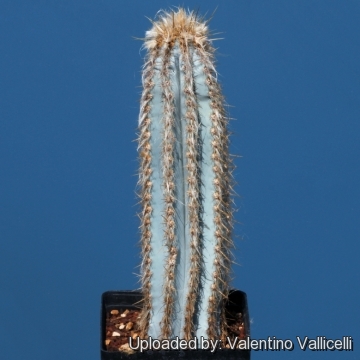 Pilosocereus pachycladus Photo by: Valentino Vallicelli
Pilosocereus pachycladus Photo by: Valentino Vallicelli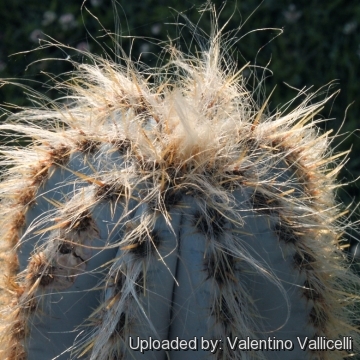 Pilosocereus pachycladus Photo by: Valentino Vallicelli
Pilosocereus pachycladus Photo by: Valentino Vallicelli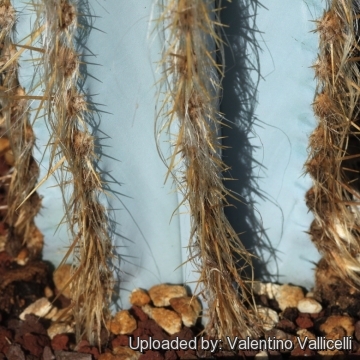 Pilosocereus pachycladus Photo by: Valentino Vallicelli
Pilosocereus pachycladus Photo by: Valentino VallicelliCultivation and Propagation: It grows well, though slowly, but it possible to increase the speed of growth to some extent by providing adequate amount of water, warmth, and an all-purpose liquid fertilizer diluted half strength during the active growing season, but it’s susceptible to rotting if too wet. It likes a sunny position also blasting sun in summer. If grown indoor provide 4 to 6 hours, or more, direct morning or afternoon sun. It should be watered regularly in Summer and kept drier in Winter. It like pots with generous drain holes, need a very porous, slightly acidic potting medium (add pumice, vulcanite, and perlite). It can be grown outdoors in frost-free climates, needs anyway to kept above 12 °C and dry in winter. But it can tolerate temperatures down to 5° C (or even 0° C) for very short periods if very dry and ventilated.
Manteinance: Repot every two years.
Remarks: Do not use fatty products (like horticultural oil, neem oil, mineral oil, and insecticidal soaps) that can fade and ruin the characteristic blue colouration of the epidermis!
Propagation: Seeds or cuttings.
Your Photos
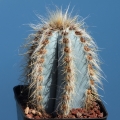
by Valentino Vallicelli



















